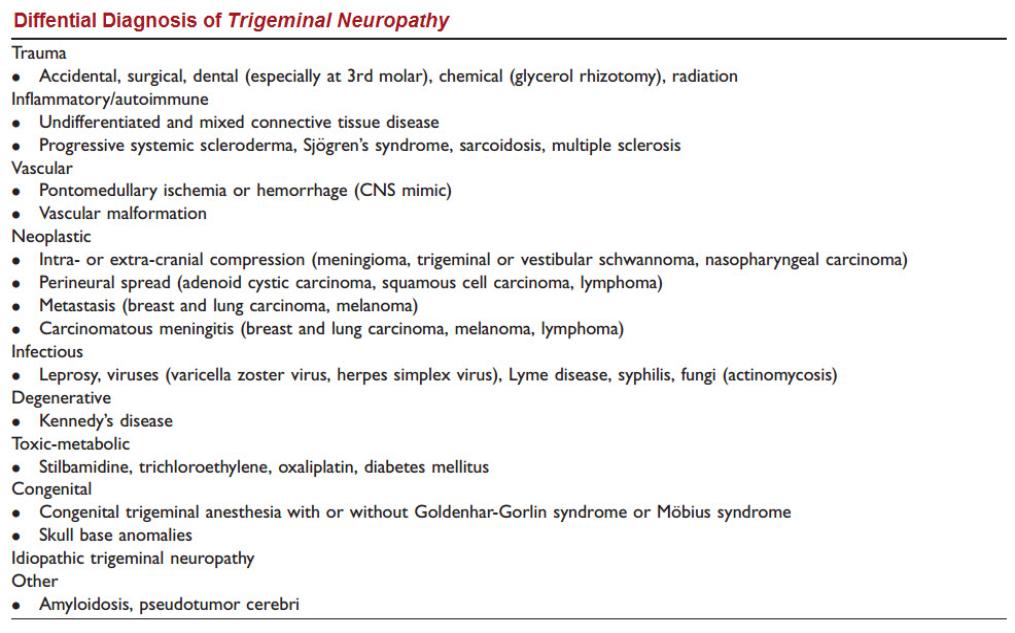Benign Trigeminal Sensory Neuropathy
A syndrome of isolated (though occasionally, bilateral) facial numbness, gradual in onset,
which may involve a single division of the Trigeminal Nerve or all 3 divisions.
Some cases are idiopathic but many underlying diseases, especially connective tissue diseases, can cause Trigeminal Sensory Neuropathy (TSN).
When an apparent cause is not detected, the disease is defined as Idiopathic Trigeminal Sensory Neuropathy (ITSN), which is usually transient.
ITSN is always considered an exclusion diagnosis, so that various systemic, intra-cranial (within the skull) and extra-cranial (outside the skull) disorders must first be eliminated.
Classically, involvement of the Trigeminal Nerve is related to demyelinating diseases (such as Multiple Sclerosis), the presence of tumours, vascular diseases, trauma, local injections, terminal kidney disease, infections, drugs and connective tissue diseases.
Of this group of disorders, Multiple Sclerosis and connective tissue diseases, as well as ITSN, are of particular importance.
Trigeminal neuropathy most commonly manifests as numbness in the face or mucous membranes, sometimes in association with masticatory weakness, paresthesiæ, and / or pain.
Although many patients may be eventually labeled as having idiopathic TNO, the diverse and potentially life-threatening etiologies that may underlie TNO demand a complete evaluation. A patient labelled as having idiopathic TNO deserves a high index of suspicion for missed diagnoses, which may only reveal themselves with time.
Treatment should be aimed at targeting the underlying patho-physiology, if identified and treatment of complications, which may be uncomfortable, disabling, or potentially life-threatening to the patient.

